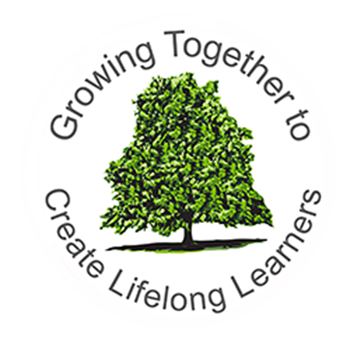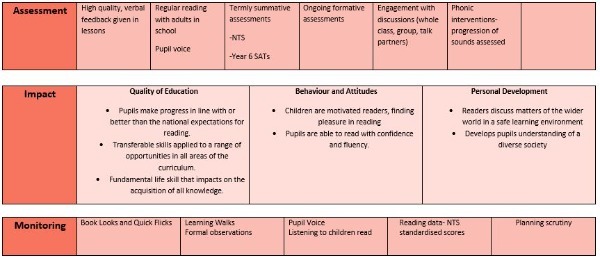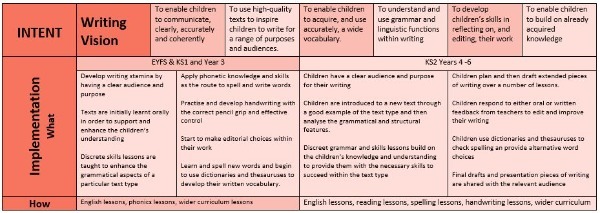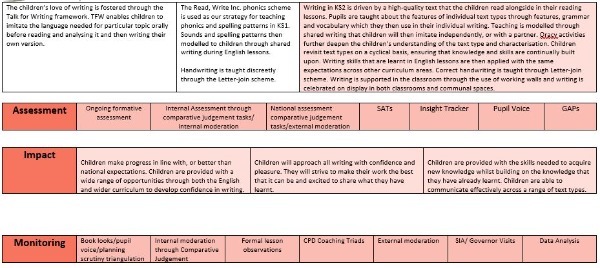This page is currently under review
Reading Curriculum Handbook
Writing Curriculum Handbook
About Talk for Writing
Talk for Writing – the key to raising attainment
The method
Talk for Writing is powerful because it enables children to imitate the language they need for a particular topic orally before reading and analysing it and then writing their own version. It builds on 3 key stages:
The imitation stage
Once the teacher has established a creative context and an engaging start, a typical Talk-for-Writing unit would begin with some engaging activities warming up the tune of the text, as well as the topic focused on, to help children internalise the pattern of the language required. This is often followed by taking an exemplar text, supported visually by a text map and physical movements to help the children recall the story or non-fiction piece. In this way the children hear the text, say it for themselves and enjoy it before seeing it written down. Once they have internalised the language of the text, they are in a position to read the text and start to think about the key ingredients that help to make it work. This stage could include a range of reading as-a-reader and as-a-writer activities. Understanding the structure of the text is easy if you use the boxing-up technique and then help the children to analyse the features that have helped to make the text work. In this way the class starts to co-construct a toolkit for this type of text so that they can talk about the ingredients themselves – a key stage in internalising the toolkit in their heads.
The innovation stage
Once the children have internalised the text, they are then ready to start innovating on the pattern of the text. This could begin with more advanced activities to warm up the key words and phrases of the type of text focused on so the children can magpie ideas. Younger children and less confident writers alter their text maps and orally rehearse what they want to say, creating their own version. The key activity in this stage is shared writing, helping the children to write their own by “doing one together” first. This could begin with using a boxed-up grid (innovating on the exemplar plan) to show how to plan the text and then turning the plan into writing. This allows the children to see how you can innovate on the exemplar text and select words and phrases that really work, demonstrating how to regularly read your work aloud to see if it works is important here. This process enables the children to write their own versions through developing their ability to generate good words and phrases and also, hopefully, develops the inner judge when they start to decide why one word or phrase is best. If, during this process a teaching assistant (or in KS2 an able child) flip-charts up words and phrases suggested, these can be put on the washing line alongside the shared writing so when the children come to write they have models and words and phrases to support them. Throughout the shared writing, the children should be strengthening the toolkit so they start to understand the type of ingredients that may help. Once they have finished their own paragraph/s children should be encouraged to swap their work with a response partner. Then with the aid of a visualiser, the whole class can also discuss some of the more successful work. Time now needs to be found to enable the children to give their own work a polish in the light of these discussions and perhaps to begin the dialogue about what works by writing their own comment on their work for the teacher to comment on.
The invention/independent application stage
The teacher now has the opportunity to assess the children’s work and to adapt their planning in the light of what the children can actually do. This stage could begin with some activities focused on helping the children understand aspects that they were having difficulty with and should include time for the children to have a go at altering their work in the light of what they have just learnt so that they start to make progress. This stage will continue to focus on the next steps needed to support progress so the children can become independent speakers and writers of this type of text. Perhaps some more examples of the text are compared followed by more shared writing on a related topic and then the children can have a go themselves on a related topic of their own choosing. Typically, teachers work with the children to set ‘tickable targets’ which focus on aspects that they need to attend to. Again, this section will end with response partner and whole class discussion about what features really worked, followed by an opportunity to polish your work. This process also helps the children internalise the toolkit for such writing so that it becomes a practical flexible toolkit in the head rather than a list to be looked at and blindly followed. At the end of the unit, the children’s work should be published or displayed. The teacher will now have a good picture of what features to focus on in the next unit to move the children forward. It is important to provide children with a purpose for their writing so classroom display or some sort of publishing is useful.







